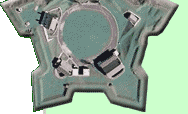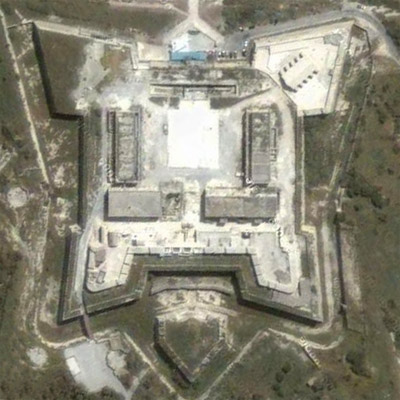
 |
 |
Fort Manoel Valetta, Malta |
 |
 |
 |
 |
 |
||
 |
in 1530, Spanish King Charles V (1500-1558) gave the little island of Malta to the Knights Hospitaller. The Knights, an order that originally began as tenders of a hospital built in Jarusalem in 1023 to care for sick and injured pilgrims to the holy land, had been wandering dejectedly around Europe after having been booted off of the island of Rhodes in 1522 by Sultan Suleiman the Magnificent (1495-1566) and 200,000 of his sword-swingin' Ottomans. In 1565 the Sultan, unhappy that the Knights had reestablished themselves on Malta, sent 40,000 men to boot them off of their new island home as well: Though the Knights numbered around 700 and commanded only about 8,000 troops, they ultimately managed to hold on to Malta and sent the demoralized Ottomans boating back to Constantinople. Having withstood the siege, the Knights decided they needed to build a massively fortified city to strengthen their hold on Malta. Jean Parisot de Valette (1494-1568), Grand Master of the Knights, laid the first stone of what would become Valetta on March 28 1566. Fort Saint Elmo was already a modest star fort by 1565, overlooking the entrance to Valetta's harbor, but the lengthy battle with the Ottomans had illustrated a weakness: Nearby high ground on what is now Manoel Island (then known as Isolotto) proved to be an excellent place for enemies to commandeer and throw things at Fort Saint Elmo! This realization was made as early as 1569, but work didn't commence on Fort Manoel on September 14 1723. Since the fort was designed to keep enemies from accessing the high ground, it is defensively oriented against the landward side. Construction was completed in 1755. Malta stayed happy and beknighted until 1798, when Napoleon (1769-1821)'s Navy, on its way to Egypt, asked for safe harbor for its ships to resupply. Once safely in Valetta's harbor, the French turned against their hosts. The Knights' Grand Master Ferdinand von Hompesch zu Bolheim (1744-1805) did nothing to resist the French, arguing that the Knights' charter didn't permit them to fight against Christians. The loyal Maltese garrison in Fort Manoel threw back three French assaults on the fort, but surrendered when their intrepid Grand Master signed a capitulation document aboard the French flagship. The French moved in to Fort Manoel and Valetta's other fortifications. The Knights were done in Malta, and dispersed throughout Europe. After three months of putting up with the French, the Maltese rebelled: After bashing at each other for two years, the French surrendered and left in 1800. At the completion of the Napoleanic Wars in 1814, the Treaty of Paris awarded Malta to the British, who moved in. The Brits made gobs of improvements to just about all of the fortifications at Valetta, including strengthening bastions for the addition of newer, more powerful cannon. Fort Manoel was used for many years as a quarantine area for transient sailors, a common practice in the days when shipboard diseases weren't understood any better than land-borne diseases. Malta remained in British hands through the Second World War (1939-1945), despite its close proximity to fascist Italy, but not for lack of trying by the Germans and Italians. Malta in general and Valetta in particular received a thorough plastering throughout the war: After one nasty period of bombing, over 400 individual hits were counted at Fort Manoel. The heroism of the Maltese people was awarded by British King George VI (1895-1952) with the George Cross on April 15 1942. The George Cross is now represented on Malta's flag. Having been left to the elements for many years, Fort Manoel is now in the midst of a comprehensive restoration campaign, supposedly to be completed in 2010. |
 |
 |
||
|
|
|||||||
Info Source 1 Info Source 2 Info Source 3 Info Souce 4 Info Source 5 Info Source 6 Info Source 7 Info Source 8 Info Source 9 Info Source 10 Info Source 11 Info Source 12 Info Source 13 Thanks to Google Maps for the image! ©2010 starforts.com |
 |